Strong forged steel bow with antique string. Solid fruitwood crossbow with a lower protuberance for resting. On the top, there is a brass-coated channel for guiding the bolt. The nut is made of bone. The trigger guard has two notches for positioning the hands. Adjustable sighting system with diopter. Cheek stock. Iron stirrup allowing the crossbowman to pass the foot to operate the crowbar for cocking by positioning the rope in the slot of the nut.
Northern Europe - late 18th century.
Good condition. What is extraordinary is the presence of the original rope.
Overall length: 98 cm. Bow width: 76 cm.
The crossbow first appeared in China in the 12th century BC, and was first used for hunting by the Romans. There are several different types of crossbow: jalet, cranequin, crowbar, etc. Quieter than a firearm whose detonation causes game to flee, the crossbow is a hunter's precious ally. The crowbar, which engages in the pegs fixed to either side of the crossbow, is used to tension the string to its maximum. To fire the weapon, simply press the trigger located under the stirrup. The power of such a weapon is far greater than that of a bow, with the projectile being propelled at more than 200 km/h. So it's hardly surprising that this type of crossbow is used to hunt big game, as shown in this illumination from the ‘Livre de Chasse’ by Gaston Phébus (1331-1391), in which the most famous avenger of the Middle Ages describes the different types of hunting activities listed.
Translated with DeepL.com (free version)


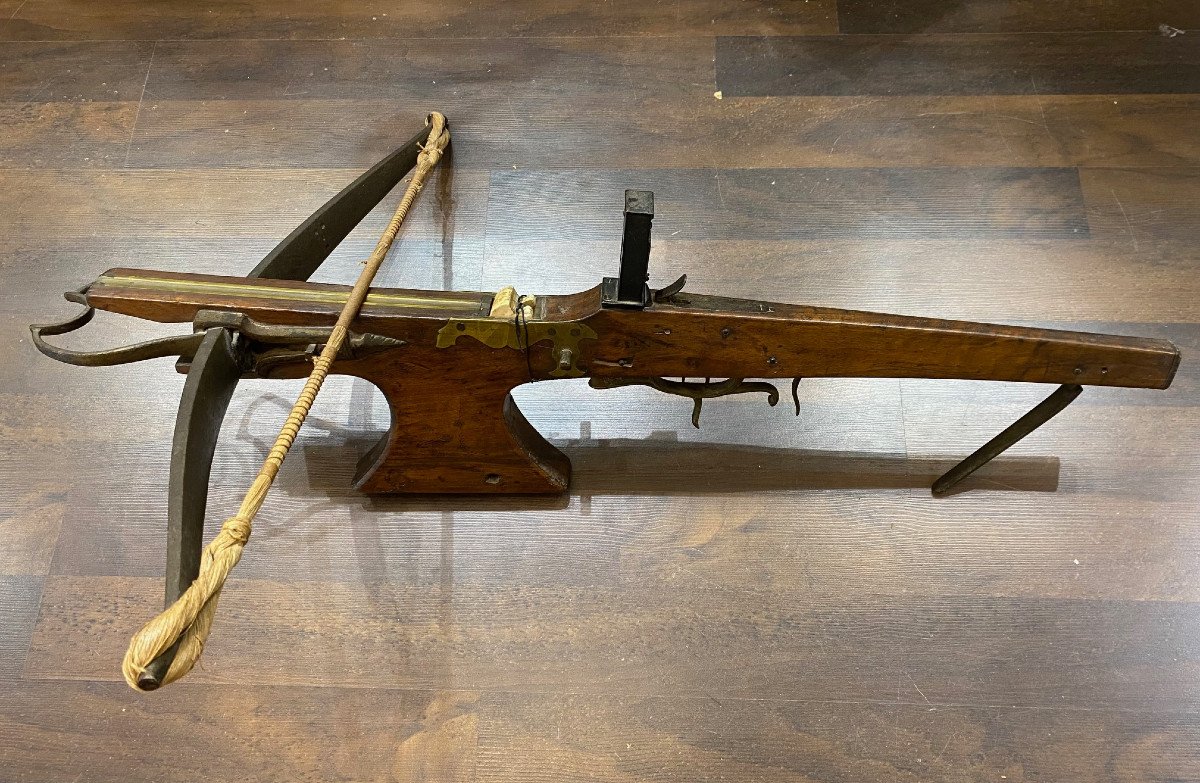
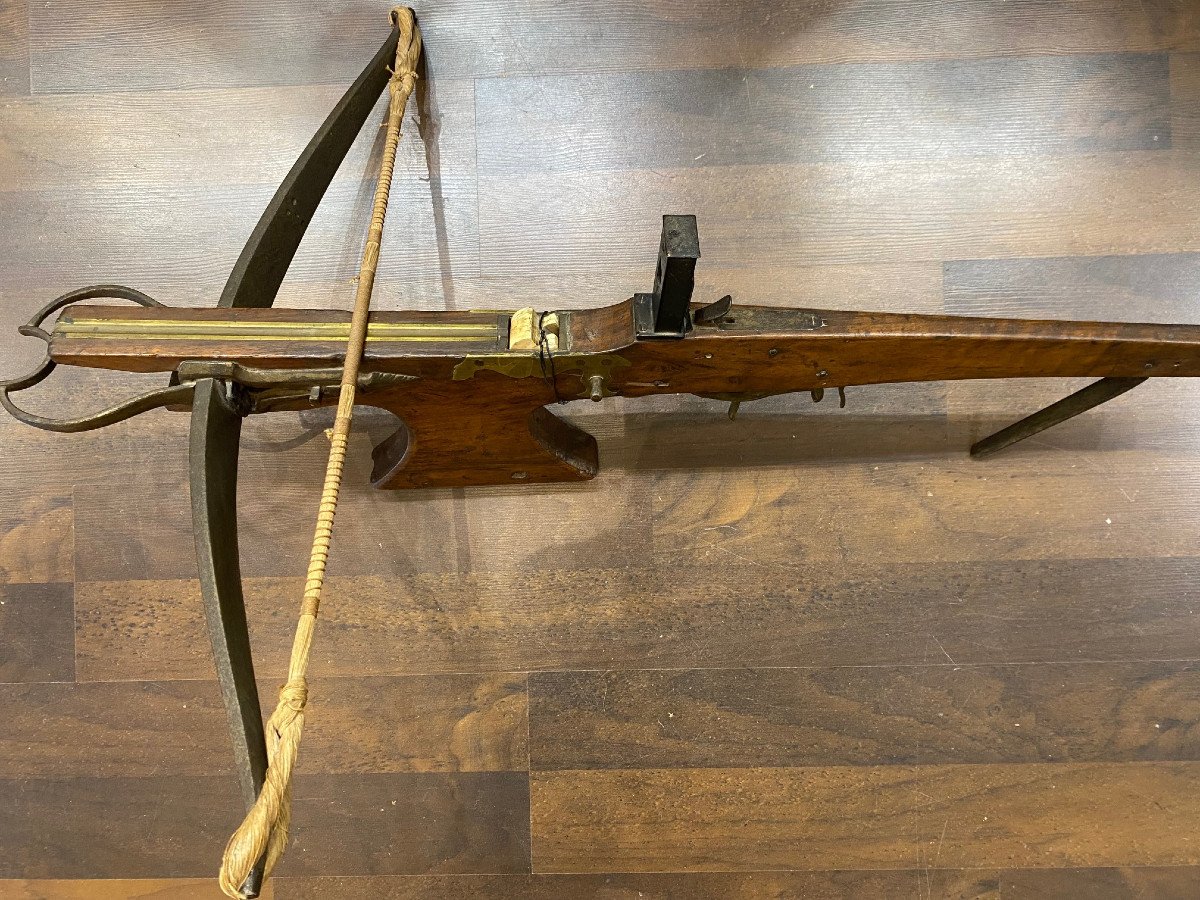
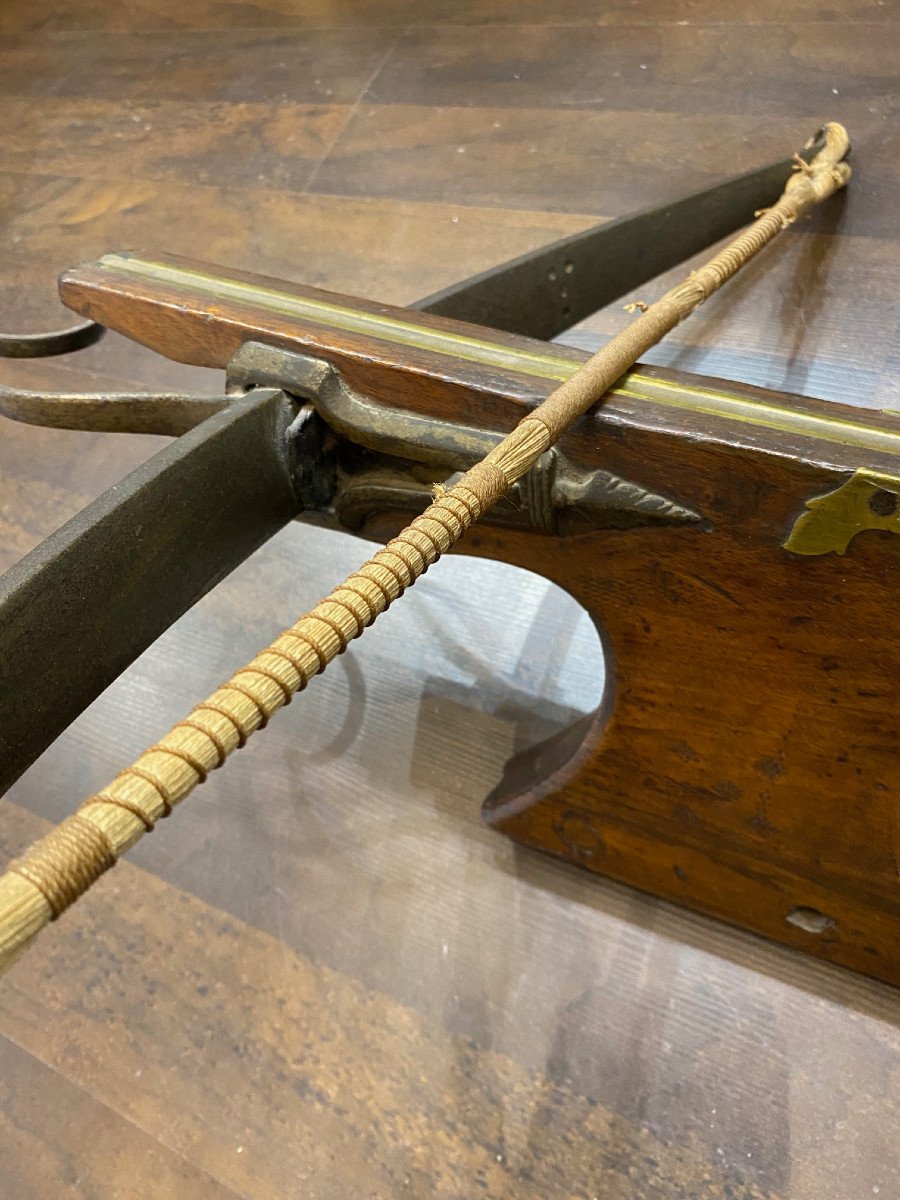
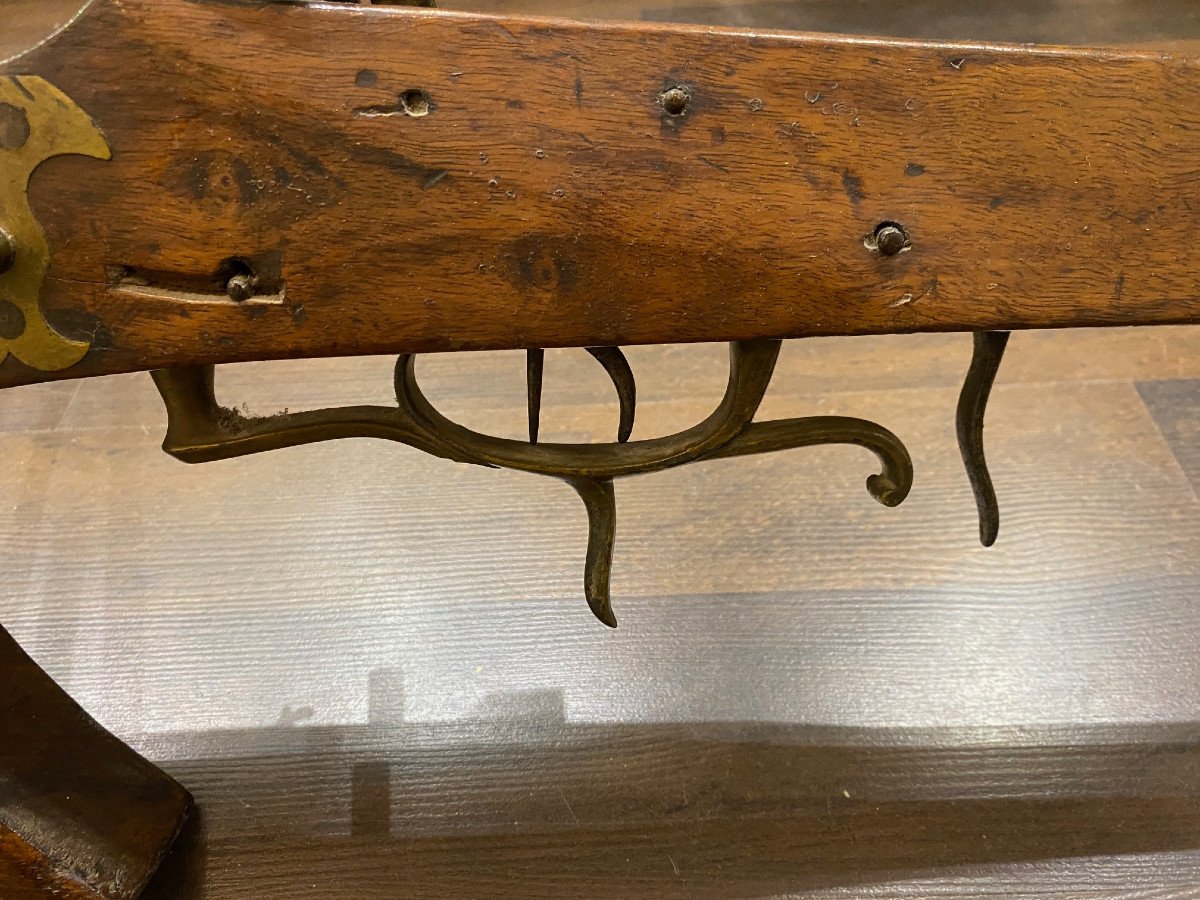
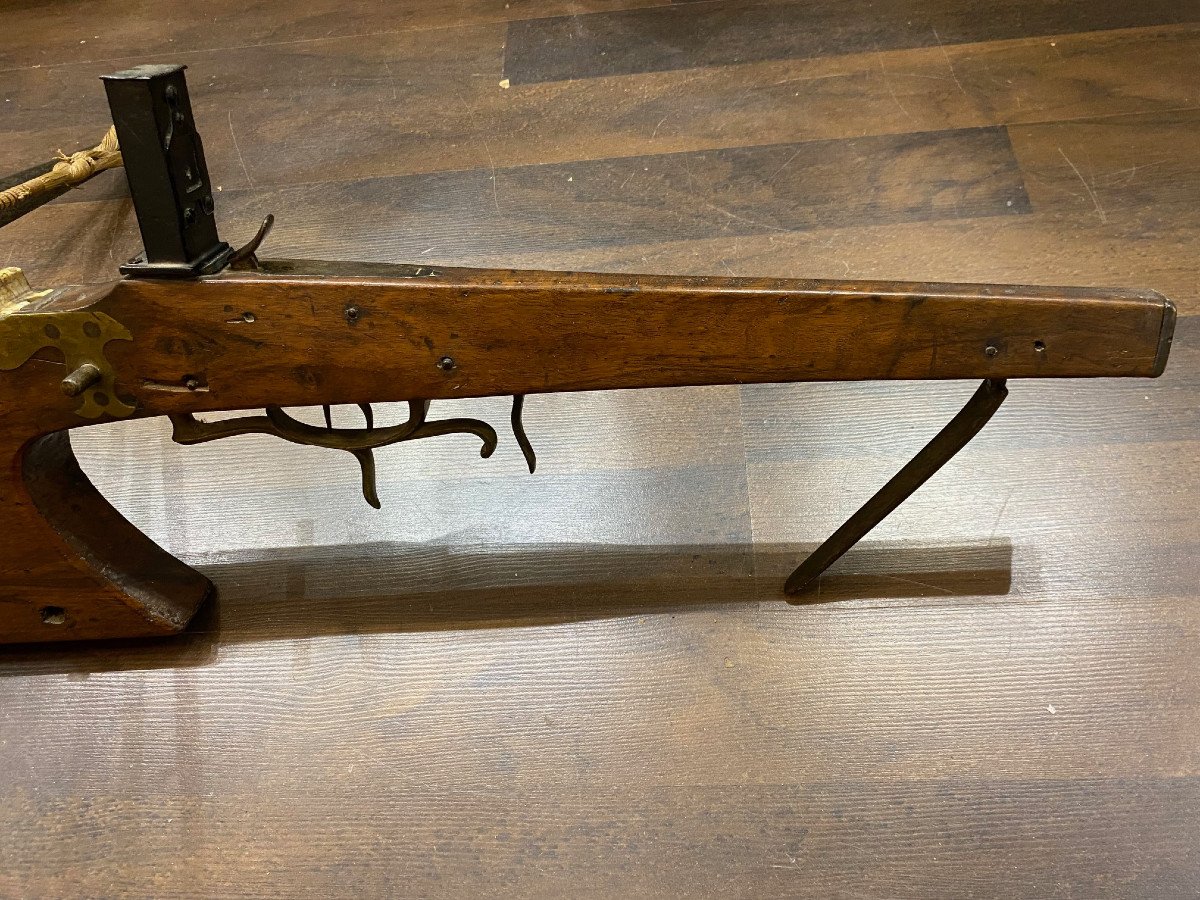
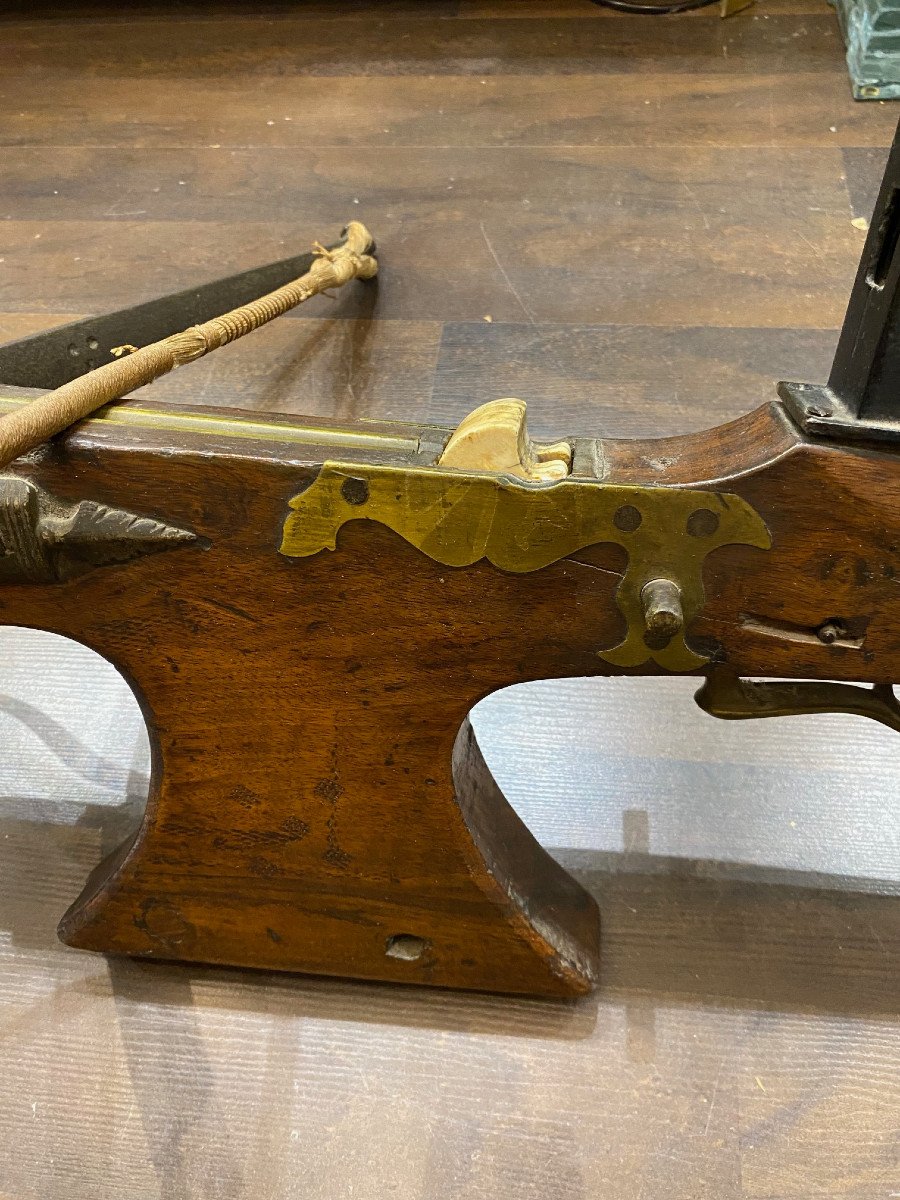








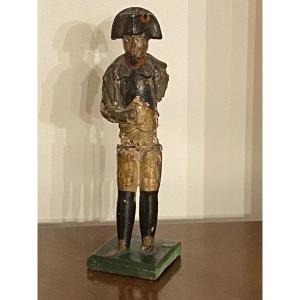








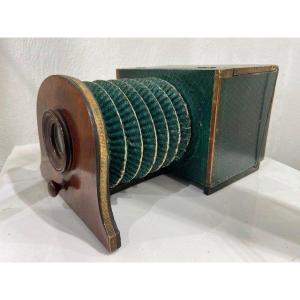






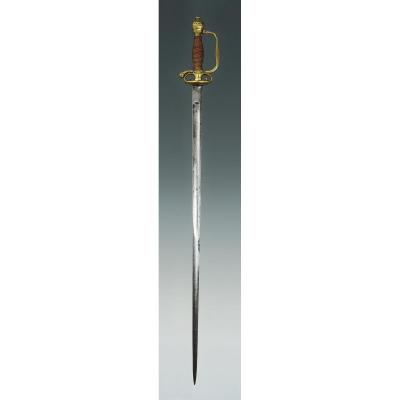
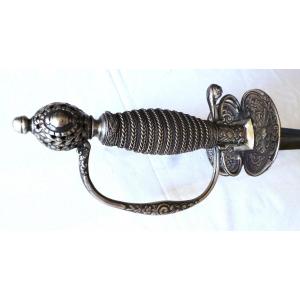




 Le Magazine de PROANTIC
Le Magazine de PROANTIC TRÉSORS Magazine
TRÉSORS Magazine Rivista Artiquariato
Rivista Artiquariato